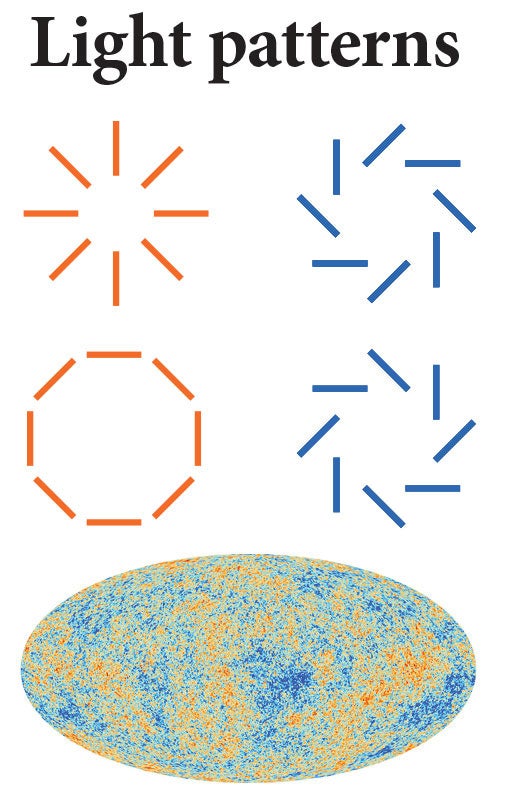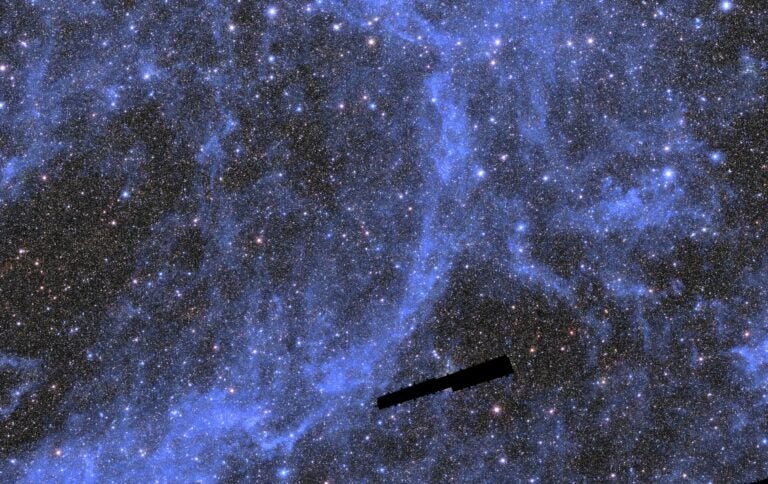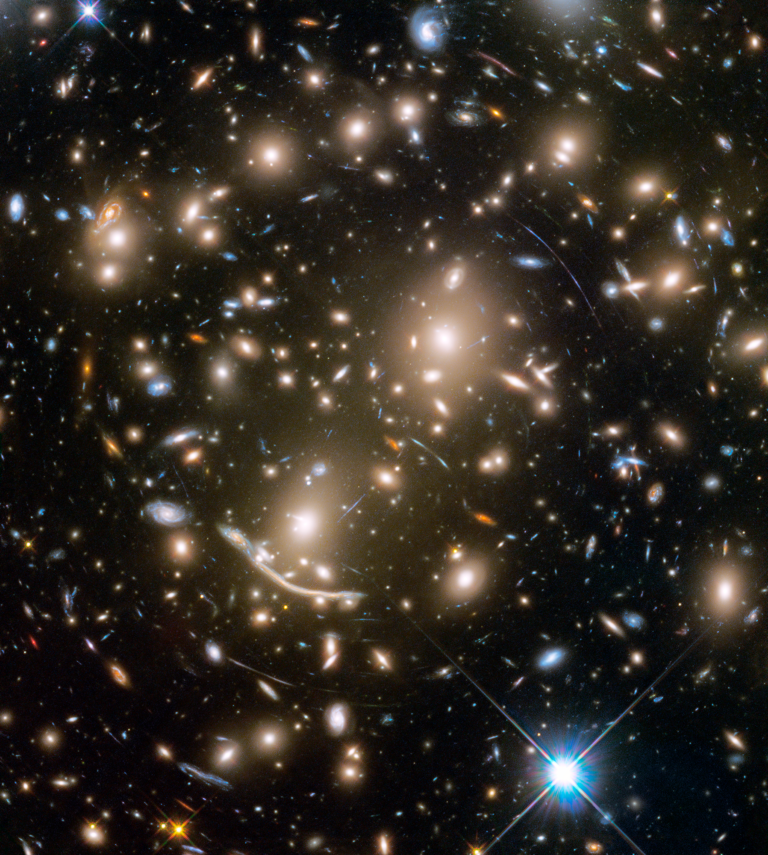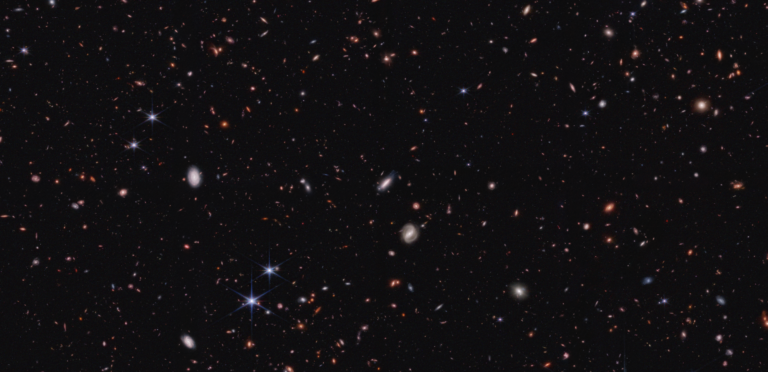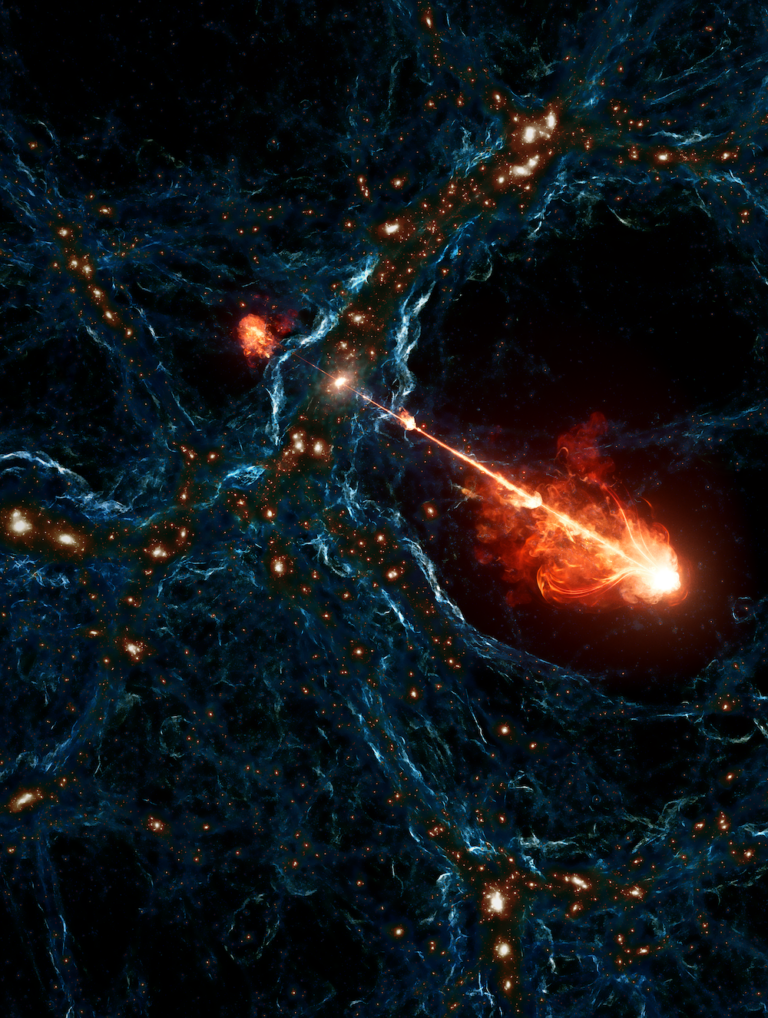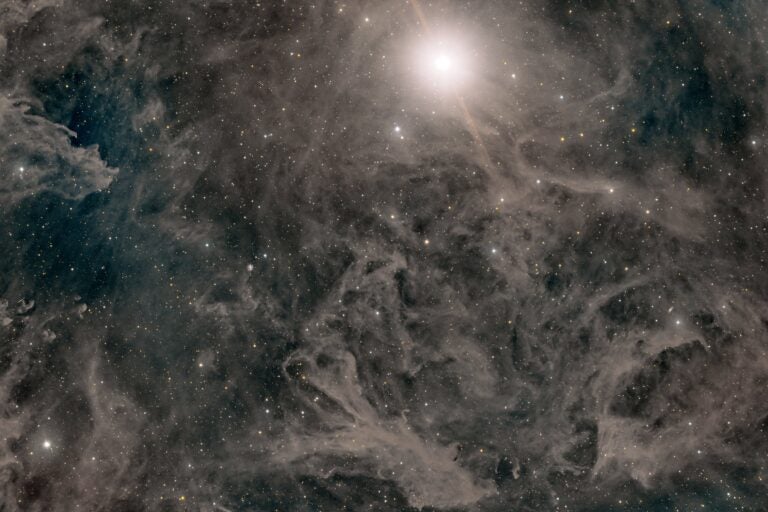Light can be polarized as well, although generally the preference for one particular orientation is not as strong. The blue sky is polarized, for example. Sunlight bounces off particles in Earth’s atmosphere, and the component that scatters down on us oscillates parallel to the horizon.
Even more incredibly, when we use millimeter-wavelength telescopes to look up at space, we see a polarized glow from when the early universe cooled just enough for the first protons and electrons to combine and let light move freely. This is the cosmic microwave background (CMB). Observing this radiation shows us a slice of the universe as it looked about 13.8 billion years ago, only 380,000 years after the Big Bang.
A mechanism similar to what polarizes the blue sky also polarizes the CMB, but to about the 10 percent level. In this case, the Sun’s position doesn’t dictate the light’s preferred direction; something even bigger and more fundamental does — the distribution of matter, moving under gravity’s influence in the early universe.
With sensitive detectors, like those on the South Pole Telescope, we can make maps of the polarization across the sky. At each location on the sky, we represent the polarization as a small stick, indicating its amplitude and orientation. We then use the patterns in these polarization maps to learn about the early universe (and also the later cosmos, but that’s a story for another time).
We can break down these polarization patterns into so-called “E-modes” and “B-modes.” E-modes represent radial patterns, like spokes on a wheel, while B-modes represent swirling patterns, like water flowing into a drain. We think that a period of hyperacceleration in the first moment of the universe, called the “inflation epoch,” generated B-mode polarization patterns. Earlier this year, the BICEP2 group reported the first detection of these B-modes, a discovery that (if confirmed) will have momentous implications for our understanding of the Big Bang.
McGill University, Montreal

